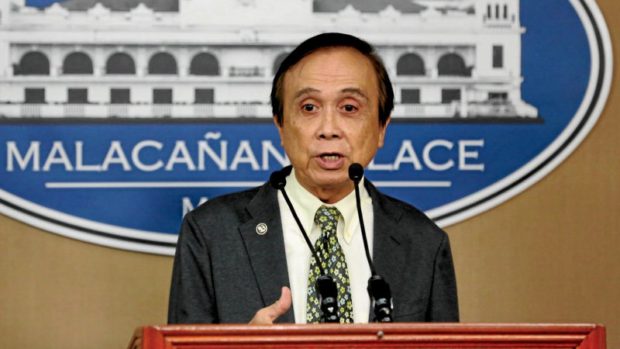Taming inflation won’t compromise growth–Pernia
Amid rising consumer prices, will the government prioritize tempering inflation over sustaining robust economic growth? For the country’s chief economist, both can be done at the same time.
“Sustaining high economic growth is needed to expand supply, that tempers inflation in the medium to long term,” Socioeconomic Planning Secretary Ernesto M. Pernia told the Inquirer last Friday.
While continuously expanding the economy, Pernia, who heads state planning agency National Economic and Development Authority, was also optimistic that inflation “will be tempered in the short term, with normalizing peso and oil, rice and fish prices.”
In a press conference last week, Pernia said they were still optimistic the second-quarter gross domestic product growth, to be reported in August, would outpace the 6.8 percent in the first quarter.
“Of course, it will be better with lower inflation,” Pernia said, noting that the elevated prices of basic goods and services dampened growth.
In early May, the Washington-based Institute of International Finance warned that the Philippines would unlikely hit its economic growth target in the next two years due to expectations of sustained higher consumer prices in the near term.
The IIF had projected a 6.7-percent gross domestic product expansion this year, the same rate as last year, before slightly slowing to 6.6 percent next year.
The IIF forecasts for 2018 and 2019 were below the government’s yearly growth target of 7-8 percent from this year to 2022.
“Pursuing growth while maintaining price stability is the primary challenge for policymakers in the Philippines this year. For the first time in many years, the authorities are facing an economy running close to potential, which has given rise to mounting inflation pressure testing the upper limit of the central bank’s inflation target range. We foresee successful policy coordination, balancing expansionary fiscal spending to support growth with a tighter monetary policy stance to anchor inflation expectations,” the IIF had said.
As such, “tighter monetary conditions will likely prevent growth this year and next from reaching the official target range of 7-8 percent,” according to the IIF.
Also in May, when the government reported the below-target first-quarter GDP growth, Pernia admitted that high consumer prices were the “spoiler.”
“If not for the first quarter 2017 to the first quarter 2018 rate of increase in inflation, real GDP growth would have been well-within our growth rate target of 7-8 percent. So inflation is the spoiler, that is why we really need to focus on inflation especially because it is the No. 1 concern expressed by Filipinos in surveys,” he had said.
Inflation rose 5.2 percent year-on-year in June, the fastest rate of increase in prices of basic goods and services in over five years.
Headline inflation averaged 4.3 percent in the first half, already above the government’s full-year target range of 2-4 percent.
In a forum last week, Bangko Sentral ng Pilipinas Deputy Governor Diwa C. Guinigundo said monetary authorities “expect [inflation] readings to remain elevated for the rest of the year.”
Economic managers also said “inflation may still peak in the third quarter,” even as they expect it to taper off by October.
“We remain optimistic that we can meet our medium-term economic growth target of 7-8 percent, notwithstanding the growth risks that we need to manage,” Pernia, Finance Secretary Carlos G. Dominguez III and Budget Secretary Benjamin E. Diokno said in a joint statement last week.

